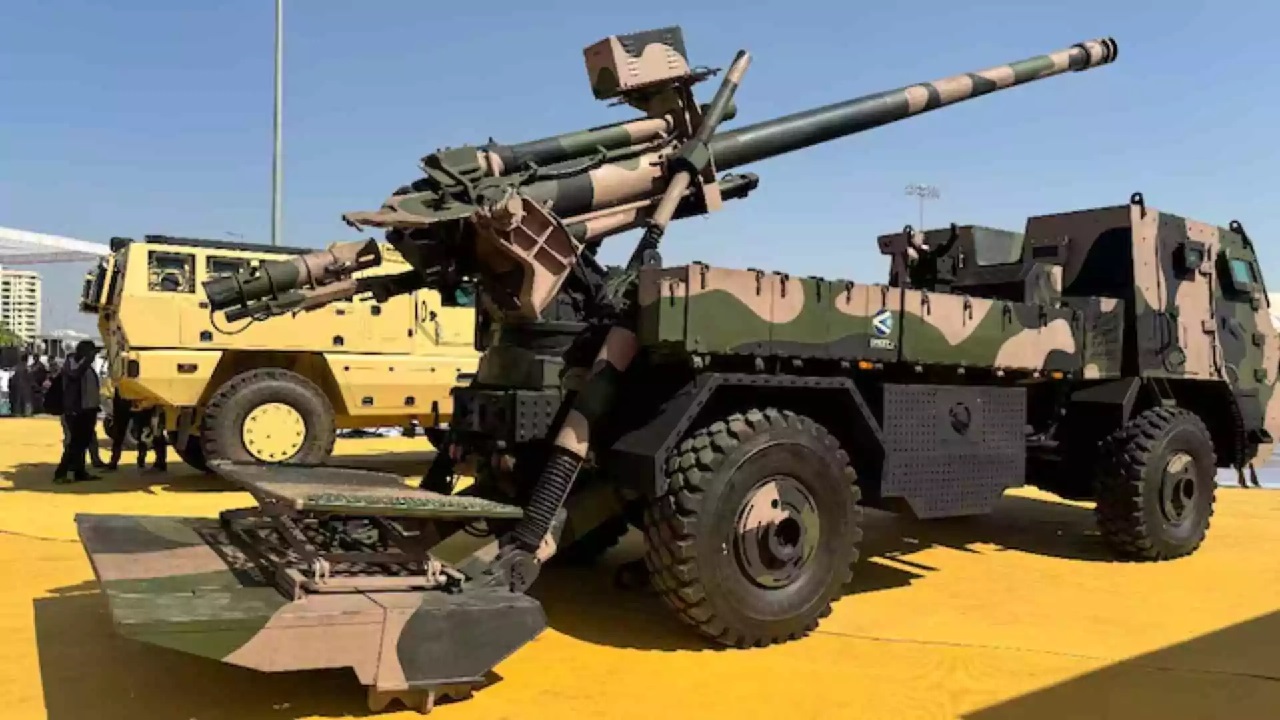A Major Boost for India’s Defence Industry
In a landmark decision to enhance India’s defence capabilities, the Modi Cabinet has approved a ₹7,000 crore ($840 million) acquisition of Advanced Towed Artillery Gun Systems (ATAGS) for the Indian Army. This move is a significant step toward self-reliance in defence manufacturing under the Atmanirbhar Bharat initiative. The contract, cleared by the Cabinet Committee on Security (CCS) on March 19, will equip 15 artillery regiments with 307 howitzers and 327 gun-towing vehicles. The agreement is expected to be finalized within a week.
The Development of ATAGS: A Timeline
The 155mm/52-calibre ATAGS have been designed and developed by the Defence Research and Development Organisation (DRDO) and will be produced by private defence firms Bharat Forge and Tata Advanced Systems. Bharat Forge, the lowest bidder, will manufacture 60% of the guns, while Tata will produce the remaining 40%. The journey of ATAGS development has been marked by rigorous trials and setbacks:
· 2013: DRDO initiates a project to replace the Indian Army’s aging artillery.
· 2017: ATAGS makes its first appearance at the Republic Day Parade, featuring in the 21-gun salute.
· 2018: Winter trials are conducted in Sikkim.
· 2020 (September): A barrel burst incident occurs during final trials in Pokhran, injuring four personnel.
· 2021-2022: Retrials take place in Sikkim and Pokhran to address earlier setbacks.
· 2023: ATAGS is approved for production after successful testing.
· 2024: Armenia places an export order for ATAGS.
Before mass production begins, manufacturers must deliver a prototype that meets the army’s specifications within 18 months of signing the agreement.
Expanding Domestic Artillery Production
Bharat Forge is also a frontrunner in developing the 155mm/52-calibre Mounted Gun System. In July 2023, the Indian Army issued a Request for Proposal (RFP) to multiple Indian firms, including Bharat Forge. The company and other bidders sought 18 months to develop a prototype, with delivery expected by December 2025.
Additionally, the procurement process for the 155mm/52-calibre Towed Gun System (TGS) is ongoing. The Indian Army issued an RFP in July 2024, with field evaluations planned for July 2025. To prevent delays, the army has made it mandatory for all contenders to meet the deadlines without requesting extensions.
The current order of 307 guns is just the beginning, as the Indian Army has outlined a total requirement of 1,580 such guns to modernize its artillery regiments.
A Troubled History of Foreign Artillery Procurement
India’s efforts to modernize its artillery have often been hindered by corruption scandals in past foreign acquisitions. Key incidents include:
· Bofors Scandal (1980s): The Swedish Bofors deal led to major political fallout due to corruption allegations.
· Denel Controversy (2005): The South African Denel arms deal was blacklisted due to bribery accusations.
· ST Kinetics Case (2009): The Singapore-based ST Kinetics deal was scrapped over irregularities.
These past controversies have pushed India toward self-reliance in defence manufacturing. The approval of ATAGS aligns with Prime Minister Narendra Modi’s vision for Atmanirbhar Bharat, reducing India’s dependence on foreign military imports.
Ensuring Quality and Performance in Indigenous Production
While Indian-made guns have already seen some success in exports, all manufacturers must meet stringent operational standards before induction into active service. An official aware of the development stated:
“The army is committed to supporting domestic defence firms, but all weaponry must comply with our technical and performance standards for diverse terrains and climatic conditions.”
Strengthening India’s Defence Capabilities
The ₹7,000 crore ATAGS deal marks a significant milestone in India’s journey toward self-sufficiency in military equipment. With past procurement scandals pushing the country to focus on domestic production, this initiative will not only enhance India’s defence preparedness but also bolster its indigenous arms industry.
As further advancements unfold in mounted and towed gun systems, India is on track to equip its army with state-of-the-art weaponry, ensuring greater strategic autonomy and national security in the years ahead.
(With inputs from agencies)








